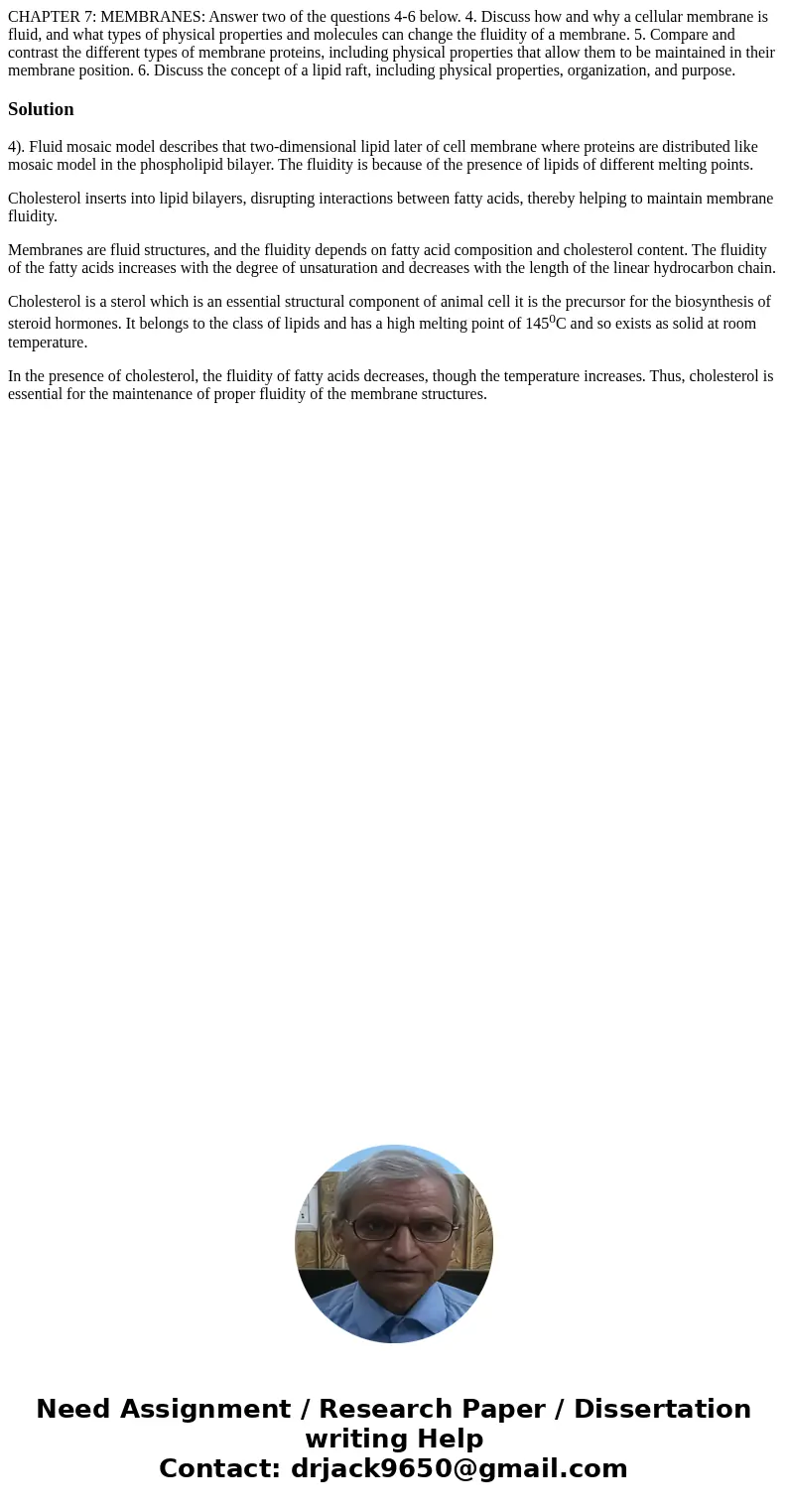CHAPTER 7 MEMBRANES Answer two of the questions 46 below 4 D
Solution
4). Fluid mosaic model describes that two-dimensional lipid later of cell membrane where proteins are distributed like mosaic model in the phospholipid bilayer. The fluidity is because of the presence of lipids of different melting points.
Cholesterol inserts into lipid bilayers, disrupting interactions between fatty acids, thereby helping to maintain membrane fluidity.
Membranes are fluid structures, and the fluidity depends on fatty acid composition and cholesterol content. The fluidity of the fatty acids increases with the degree of unsaturation and decreases with the length of the linear hydrocarbon chain.
Cholesterol is a sterol which is an essential structural component of animal cell it is the precursor for the biosynthesis of steroid hormones. It belongs to the class of lipids and has a high melting point of 1450C and so exists as solid at room temperature.
In the presence of cholesterol, the fluidity of fatty acids decreases, though the temperature increases. Thus, cholesterol is essential for the maintenance of proper fluidity of the membrane structures.

 Homework Sourse
Homework Sourse